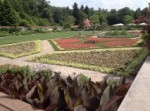 A visit to Biltmore’s garden is always a treat and going the third week of May was especially nice. The drive to the house was lush and green, and banners greeted the visitors proclaiming the Festival of Flowers. The winter had been very mild and spring was early so the plants were vigorously growing and presented themselves in all their verdant loveliness. The azalea and rhododendron display was over but there were signs of bedding-out at every turn and the Biltmore gardeners were very busy filling the beds with annuals to complement the perennial display.
A visit to Biltmore’s garden is always a treat and going the third week of May was especially nice. The drive to the house was lush and green, and banners greeted the visitors proclaiming the Festival of Flowers. The winter had been very mild and spring was early so the plants were vigorously growing and presented themselves in all their verdant loveliness. The azalea and rhododendron display was over but there were signs of bedding-out at every turn and the Biltmore gardeners were very busy filling the beds with annuals to complement the perennial display.
Closest to the house is the Italian Garden featuring classical statuary and three formal water gardens.
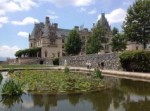
The cannas were in full bloom while the waterlilies were just starting. The lotuses leaves were in evidence but the buds and flowers were yet to come.
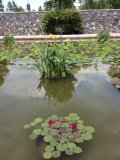
A mass of blue flag iris were blooming in another pool.
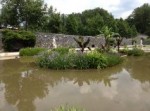
The most sensational display of annuals was in the walled garden, four acres on either side of a long arbor that forms the spine of the garden.
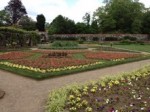
Variegated lirope was complemented by yellow Johnny-jump-ups.
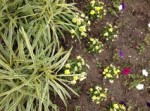
The cool spring temperatures had been kind to the perennial borders of the walled garden.
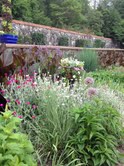
Lamb’s ear was blooming, the silver-gray color of its leaves and stems echoing the ornamental grass in the background.
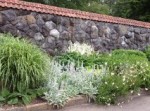
Espaliered trees looked especially well after the mild winter.

Inside the arbor, new plantings included some exotics complemented by old favorites.
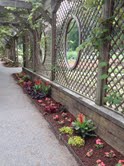
Unique topiaries in bright blue containers had been put into place as an annual border of zinnias was being planted.

The Japanese tree lilac was blooming with airy white flower heads.
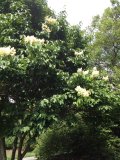
The wisterias were over but their abundant seed pods and exuberant growth were evident and impressive.
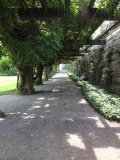
The rose garden was full of flowers including old garden roses as well as hybrid teas, Floribundas modern shrub roses.
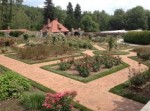
The rose arbors added height and created interesting spaces in the rose garden.
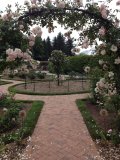
The beds are edged with grass strips, a shorter alternative to boxwoods.
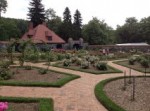
Grape vines grew up the sides of the wooden arbor running through the rose garden.
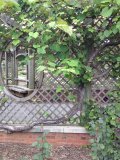
The bushes are well space out and no signs of mildew, blackspot, or other rose problems were evident.
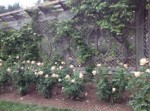
The Conservatory and its small entry gardens made an impressive sight.
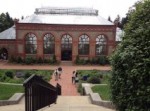
The Nigella was in full bloom, adding beautiful blue flowers and fine green foliage to the scene.
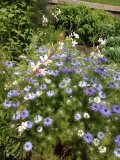
Inside the conservatory flowers and foliage made a colorful display.

Many orchids were in bloom, including a blue Vanda.

Pink and blue hydrangea had been added to one room of the conservatory.

Behind the conservatory, the nursery area was open selling many interesting plants and garden ornaments.
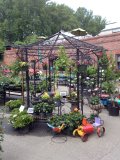
No matter what time of year, the grounds of Biltmore have something special to offer. The setting provides spectacular views of meadows and mountains, while both formal and informal gardens provide changing color and textural contrast. During May the weather is still cool and comfortable and the rose garden is especially beautiful, hey, June and July have the warm sunny days that bring the annuals to perfection. The best time to go is as often as possible so you can see it all. For a view of the gardens in the Fall see my post: A Fall Visit to Biltmore Estate, Asheville, North Carolina or A Visit to Biltmore Gardens, Asheville, North Carolina for an overview and background of the garden.
